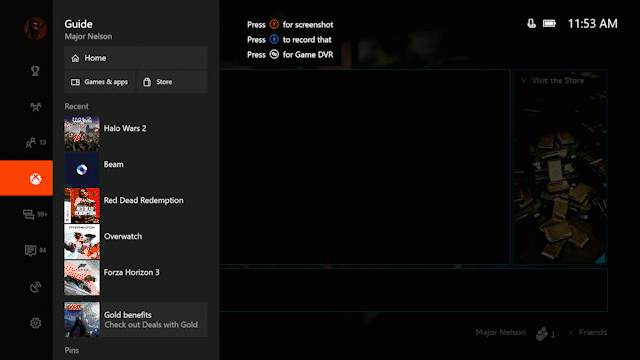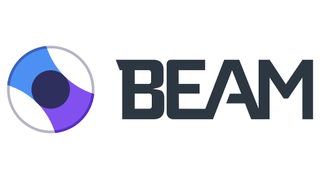Beam: 5 reasons why you should care about Microsoft’s competitor to Twitch
Beam me up Scotty

Video game streaming is big business. Since being founded in 2011, the leading video streaming service, Twitch, has amassed over 100 million monthly unique users watching over 2 million monthly streamers.
In total around 241 billion minutes of video games have been streamed through the service as of February 2017, which is an impressive number indeed.
It might not yet be a match for YouTube’s 1 billion users, but Twitch’s growth was enough to convince Amazon to buy it for $970m back in 2014.
All this growth in the video streaming space has Microsoft interested, and the company has launched its own streaming service, Beam, which is receiving a significant update alongside the forthcoming Creators Update.
New for the update will be Beam broadcasting through the Guide, and the Beam app on Xbox One. Broadcasting via the Guide will be available starting on March 29 for Xbox users and on April 11 for Windows 10 users.
We sat down with Microsoft’s Partner Group Program Manager, Chad Gibson, to understand more about the service, and how it’s hoping to compete in a market that’s been cornered by Twitch. Here are five reasons to care about Beam.
1. It's super low latency
The first advantage Beam has is that it’s built to be low-latency.
Get daily insight, inspiration and deals in your inbox
Get the hottest deals available in your inbox plus news, reviews, opinion, analysis and more from the TechRadar team.
As Gibson explains, “both the native broadcasting features for the game bar and Xbox One are using the Beam ‘Faster than Light’ SDK, which enables all of the native broadcasting to be virtually no-latency. So that’s one fundamental difference.”
Gibson explains that this is a great for community growth. “When somebody’s streaming and somebody joins their channel for example, being able to greet them instantly and be able to have that dialogue without working around a delay is a pretty magical thing.”
“When [new viewers] join a channel they can start having that dialogue with a streamer immediately and for streamers they can have a real-time chat with the folks that are watching them. So it really helps with community growth, allowing that interaction between viewers and streamers to be fostered.”
This low latency features might be helpful for chat, but they really come into their own when used with Beam’s interactivity options…
2. It's increasingly interactive
The next big thing in streaming looks to be interactivity. Amazon has made this a focus on Twitch with its Lumberyard game engine, and Beam plans on having a full suite of interactive elements for its streams.
These range from simple soundboard apps (which allow viewers to trigger specific sound effects) that can be applied to any game through to more complex interactive elements introduced as part of Microsoft’s ‘Interactive 2.0’ initiative which was launched at GDC earlier this year.
As Gibson explains, “Perhaps it’s a scenario where a game allows viewers to vote on whether the non-player characters in the game should be aggressive or passive, or the game has allowed the viewing audience to vote on what weapon or what challenge the player should be playing the game at.”
Essentially the functionality, when implemented into a game, will allow viewers to be almost as involved in the action as the streamer themselves, “blurring the lines between playing and watching” as Gibson puts it.

3. It’s integrated right into your Microsoft account
Microsoft might not have many streamers subscribed to its service but it certainly has a lot of users. Chances are, if you’ve ever owned a Windows PC or used an Xbox console then you’re the proud owner of at least one Microsoft account, and this means you’ve already got everything you need to participate in the Beam community.
This means that if you’re using an Xbox One to stream then you just have a single login for both your console and Beam, which should reduce barriers to entry for new streamers.
What’s also interesting however, is that Gibson has indicated that Microsoft is thinking about in the future extending this integration to accommodate using any money in your Microsoft account to donate to streamers.
“We really want people when they’re watching they’re favorite streamer to, with their controller, to be able to quickly support that streamer via a channel subscription or donation just by hitting a button on their controller.”

4. You can use your existing software
Twitch has a big lead on Beam, but Microsoft is attempting to make it as easy as possible for streamers to switch to using the service by working with existing streaming software like OBS and Xsplit to allow it to support the new service.
“Our goal is that we’re going to want to support software that streamers use today, and then we also want to make it easier with native broadcasting features,” Gibson says.
But Microsoft is also keen to bring the benefits of native broadcasting to these third-party services by enabling low-latency streaming on both OBS and Xsplit.
Native broadcasting is there if you want to take the simple route, but Microsoft is also hoping to entice power-users away from its rival.

5. Its community has a positive vibe...so far
It’s no secret that Twitch has experienced some growing pains during its explosion in popularity. From racist language used in its live-chat during a Hearthstone event to sexist harassment and even instances of streamers having SWAT teams sent to their homes.
So far, Beam has been relatively free of such instances, but Gibson is aware that Microsoft will have to work hard if it wants to maintain this going forward, “The Beam community is very positive and supportive and that’s something we want to keep growing, especially as the service grows.”
When we ask how Microsoft intends to do this, Gibson explains a number of avenues that they’re pursuing, “it involves both a set of folks dedicated on providing great moderation tools, great moderation experiences, as well as helping streamers know how to create the right moderation staff in their channel, and how to make it really clear what’s approved and what’s not really the right thing to do on Beam.”
Tentative steps in a competitive market
Beam still has a long way to go if it wants to take on Twitch. When we cycled through a couple of streams on the service it was unusual to find streams without more than a dozen or so viewers.
Microsoft’s attempt is especially interesting given the big push Google put behind its YouTube gaming initiative, which has also failed to dethrone Twitch as the defacto streaming service.
But Microsoft has a major advantage in controlling both Windows and Xbox. Whether you use it or not, Beam is going to be present on your operating system. Die hard streamers might never end up switching over, but for those who are new to streaming this omnipresence might end up being a silver bullet for Microsoft.
- Try Beam for yourself on a brand-new Surface Book laptop
Jon Porter is the ex-Home Technology Writer for TechRadar. He has also previously written for Practical Photoshop, Trusted Reviews, Inside Higher Ed, Al Bawaba, Gizmodo UK, Genetic Literacy Project, Via Satellite, Real Homes and Plant Services Magazine, and you can now find him writing for The Verge.

